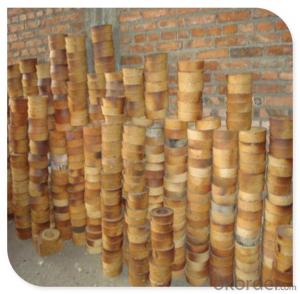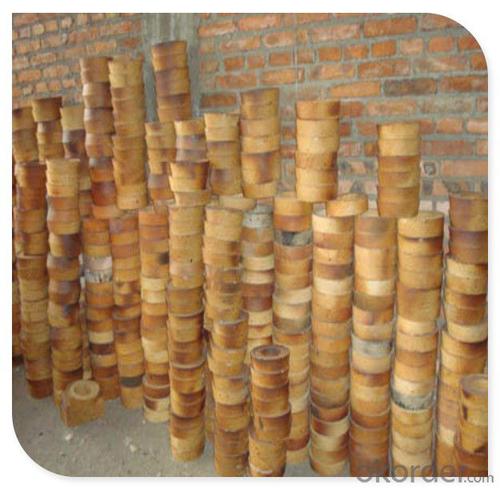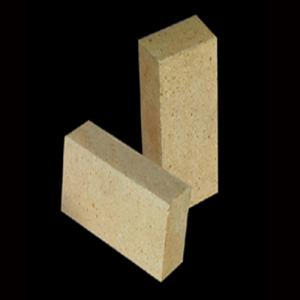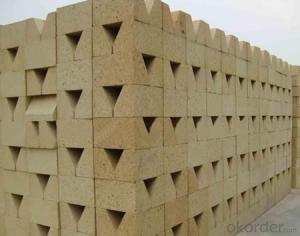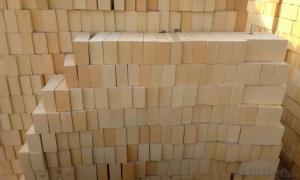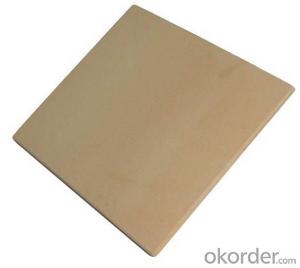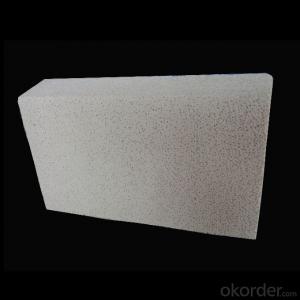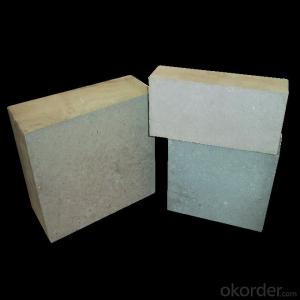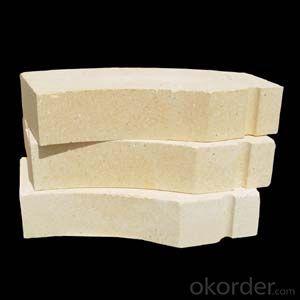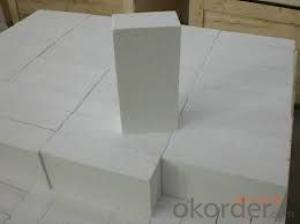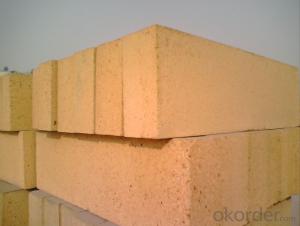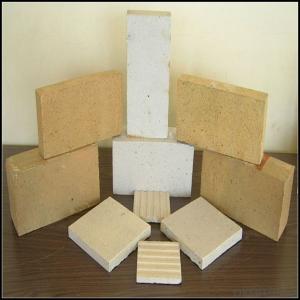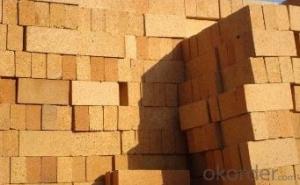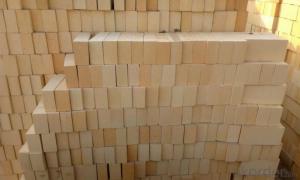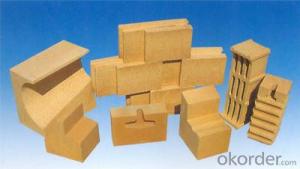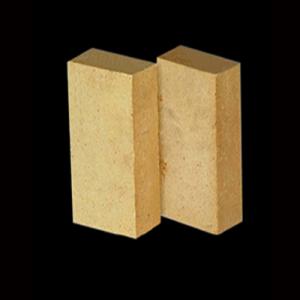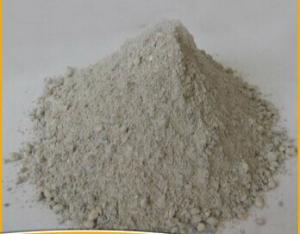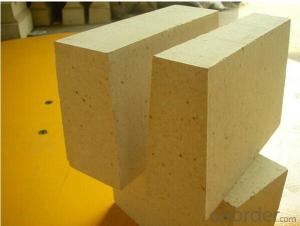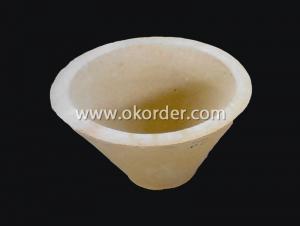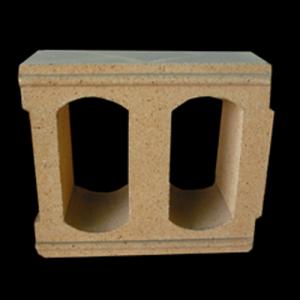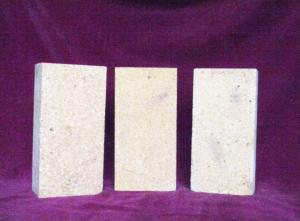High Alumina Brick for High Temperature Fire Place
- Loading Port:
- Tianjin
- Payment Terms:
- TT OR LC
- Min Order Qty:
- 3000 pc
- Supply Capability:
- 50000 pc/month
OKorder Service Pledge
OKorder Financial Service
You Might Also Like
Refractory Brick for High Temperature Fire Palce
Specification:
Refractory brick is a block of refractory ceramic material used in lining furnaces, kilns, fireboxes, andfireplaces.
We provide high quality Refractory Fire Bricks that are used on wide range in the various industries like Cement, Glass and Steel. Refractory Fire Bricks are provided as per the quantity and specifications required by the customers. We provide an extensive range of Refractory Fire Bricks at reasonable prices that depend upon the quantity ordered.
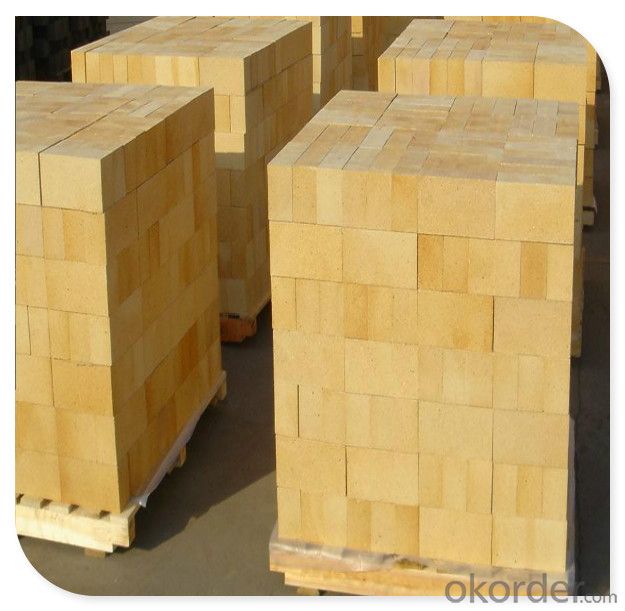
Item | Index | |||
SK-30 | SK-32 | SK-34 | SK-35 | |
AL2O3 % (≥) | 30 | 35 | 38 | 45 |
Fe2O3 % (≤) | 2.5 | 2.5 | 2.0 | 2.0 |
Refractoriness(SK) | 30 | 32 | 34 | 35 |
Refractoriness Under Load, 0.2MPa, (°C ) | 1250 | 1300 | 1350 | 1400 |
Apparent Porosity (%) | 22-26 | 22-26 | 20-24 | 20-22 |
Bulk Density (g/cm³) | 1.9-2.0 | 1.95-2.1 | 2.1-2.2 | 2.15-2.22 |
Cold Crushing Strength (MPa) | 20 | 25 | 25 | 30 |
Thermal Expansion at 1000°C (%) | 0.8 | 0.6 | 0.6 | 0.5 |
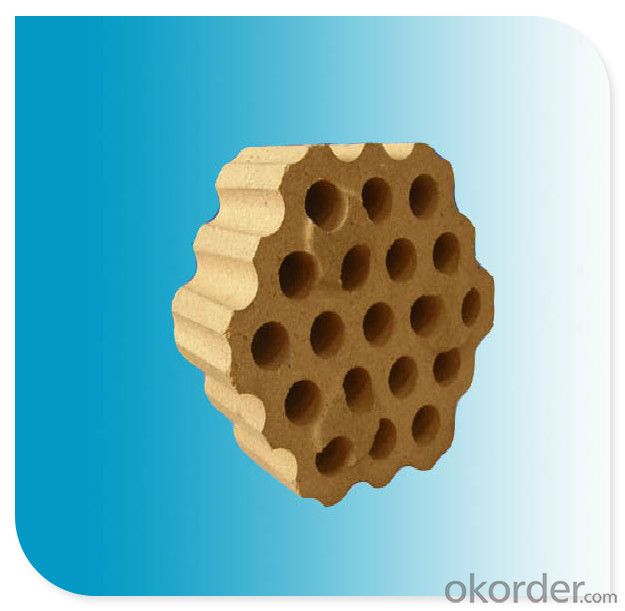
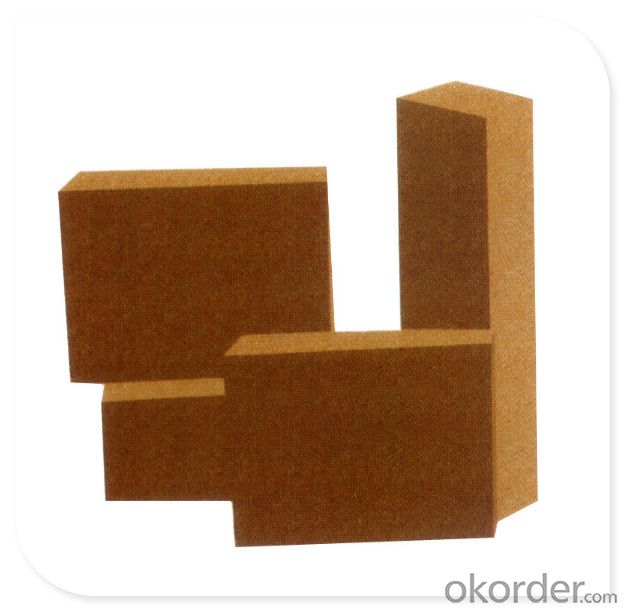
Features:
1. Low thermal conductivity, good thermal insulation performance.
2. Long service life, easy operation, could be shaped freely
3. Product specification: standard form, normal standard, shaped and special shaped bricks.
4. Can be used in various kilns because of its cheapness and general tray package. Among all of the refractory materials, it is the most widely used.
Application:
Refracory brick plant can be in direct contact with the flame,this insulating brick can be used as linings or as thermal preservation layers in various industrial furnaces and kilns in metallurgical industry, ceramic industry, chemical industry, machinery industry.
such as blast furnace, hot blast stoves ,electric arc furnace, cement kiln,melting furnace, ignition furnace, flue, refining equipment, heating equipment and piping, regeneration device, gas furnace, soaking furnace, annealing furnace, heat reaction chamber and other thermal industrial equipment.
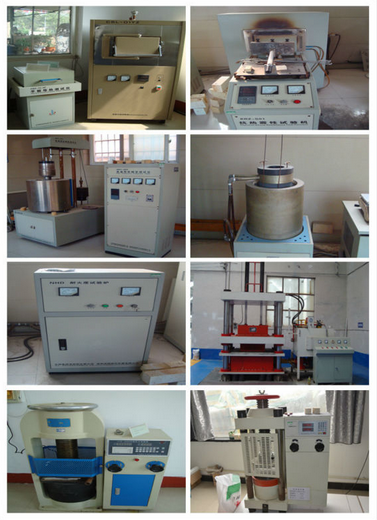
FAQ
1. Do you provide samples?
Yes, samples are free. Guarantee samples quality same as mass production quality.
2. What's the MOQ of trial order?
No limit,We can offer the best suggestions and solutions according to your condition.
3. Can we visit your company?
Of course,welcome at any time,seeing is believing.
4. Do you accept OEM?
Yes, we can do OEM.
5. What are the payment terms?
Usually T/T, D/A, D/P, L/C, Western Union ,others could be discussed .
6. How long is delivery time?
The delivery time will be determined according to the quantity of the order.
7. How are your products’ quality?
More than 20 years of production experience. The products will be strictly inspected before shipment, so the quality could be guaranteed.
8. How to slove the quality problems?
If the products are not confirmed to customer samples or have quality problems,our compay will be responsible to make compensation for it.
9. What is the service life of your bricks?
The service life of different bricks is unlike.It also depends on your using condition and method.
10. How about your company's certification?
ISO9001 and Test Report,also we could apply other necessary certification.
11. How about your price?
Quality will be guaranteed. Competitive prices based on same quality.
- Q: What is the difference between corundum and high alumina??
- The difference between them lies in the content of alumina and the alumina refractory products with alumina content higher than 48%The content of Al2O3 is higher than 90%, which is called corundum brick.
- Q: What is the price of the latest thermal insulation material?
- There are many kinds of insulation materials, and the price will fluctuate with the market. Small quantities of inquiry or procurement, then go directly to the local thermal insulation market, a wide variety of prices are basically the market price.
- Q: What are the specific raw materials for plastic pallets?
- With excellent mechanical properties, its strength and elasticity are higher than HDPE, and it has good flexural fatigue resistance. It has good heat resistance and good chemical stability. Besides being concentrated by concentrated sulfuric acid and concentrated nitric acid, it is relatively stable to other chemical reagents. The high frequency insulation performance of polypropylene is excellent because of its almost no water absorption, so the insulation performance is not affected by temperature.
- Q: What is the difference between T3 refractory bricks and high alumina refractory bricks?
- The T3 in T3 refractory bricks refers to the model indicating that the refractory brick model is T-3, and that the corresponding T-3 model is 230*114*65 (mm)
- Q: Difference between low creep high alumina brick and ordinary high alumina brick
- The emphasis is on the physical and chemical indexes of low creep and high alumina bricks. The physical and chemical indexes of the high alumina bricks are different, too. They are DRL-1550And LZ-75 perform GB GB/T2988-2012
- Q: What kinds of minerals are there in the five major categories of ore crystal chemistry?
- Halide. A few species, about 120 species, accounting for only 0.1% of the earth's crust. Most of them formed in the surface conditions, forming a salt mineral, containing less pigment ions, light color, low hardness, generally less than 3.5. Common mineral halite (NaCl), potassium (KCl), fluorite (CaF2) etc..
- Q: What are ordinary bricks, refractory bricks, hollow bricks?
- Light yellow or brownish. The utility model is mainly used for laying smelting furnaces, and can withstand high temperature between 1580 DEG C and 1770 DEG C. Also called brick. Refractory material of a certain shape and size. According to the preparation process can be divided into bricks, brick, electric melting brick (Rong Zhuzhuan), the refractory insulating bricks; according to the shape and size can be divided into standard brick, brick, brick and other specific type. It can be used as high temperature building materials and structural materials for construction kilns and various thermal equipments, and can undergo various physical, chemical and mechanical changes at high temperature. For example, refractory clay brick, high alumina brick, brick, brick etc..
- Q: The difference between ordinary and diatomite brick refractory brick
- Insulation products made from diatomaceous brick and porous diatomite. The main raw material is natural porous diatomite, and then a small amount of clay and fuel are added. The volume density of diatomite brick was 0.7g/cm3, compressive strength at room temperature is 1 ~ 2MPa, the coefficient of thermal conductivity at 400 C for 0.13 ~ 0.20W/ (M - K), the apparent porosity is greater than 70%, the coefficient of thermal expansion (1280 degrees) 0.9 x 10 - 6 DEG -1, refractoriness is greater than 1250 DEG C. Mainly used in industrial kilns and other thermal equipment, thermal pipes insulation materials, generally withstand the hot surface temperature of about 1000 degrees celsius. Mainly used in industrial kilns and other thermal equipment, thermal pipes insulation materials, generally withstand the hot surface temperature of about 1000 degrees celsius.
- Q: The difference between light high alumina brick and heavy aluminum brick
- Lightweight high alumina brick, also called high alumina insulation brick. Alumina content of 48% or more, mainly from mullite and glass phase or corundum composition of lightweight refractory. Volume density 0.4 - 1.35g/cm3. Porosity 66% - 73%, compressive strength 1 - 8MPa. Better thermal shock resistance. Usually, a high alumina clinker is added with a small amount of clay. After grinding, it is poured and shaped in the form of slurry by gas generation or foam method, and it is fired at 1300 - 1500 DEG C. Sometimes industrial alumina can be used instead of some bauxite clinker. Used for lining and insulation of masonry kilns, as well as for areas where there is no strong, high temperature molten material erosion and erosion. When contacting the flame directly, the surface contact temperature shall not be higher than 1350 degrees centigrade.
- Q: What is the apparent porosity of high alumina brick?
- Total porosity is porosity refers to the total volume of sample porosity in the percentage of total volume of samples. Apparent porosity refers to the percentage of the total volume of openings, pores, and total specimens in the sample.
Send your message to us
High Alumina Brick for High Temperature Fire Place
- Loading Port:
- Tianjin
- Payment Terms:
- TT OR LC
- Min Order Qty:
- 3000 pc
- Supply Capability:
- 50000 pc/month
OKorder Service Pledge
OKorder Financial Service
Similar products
Hot products
Hot Searches
Related keywords
